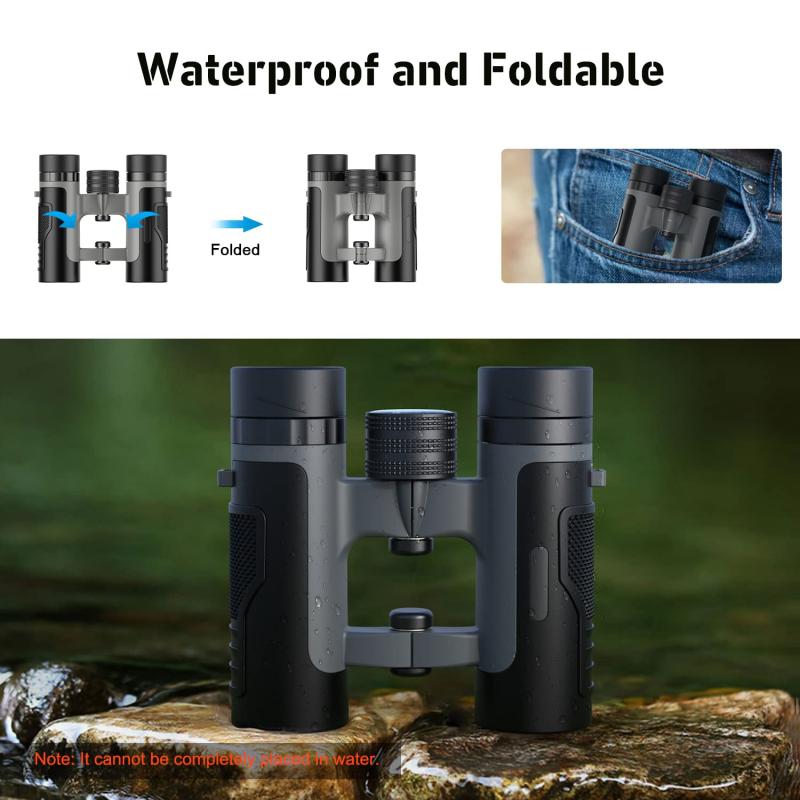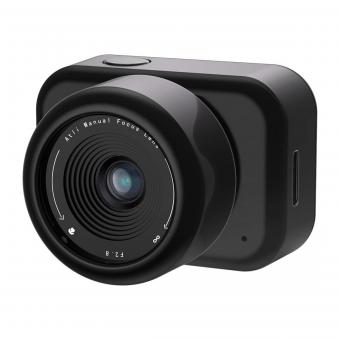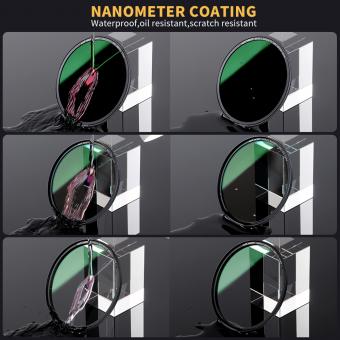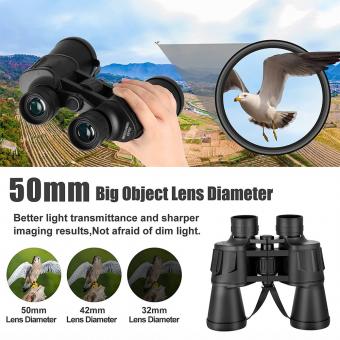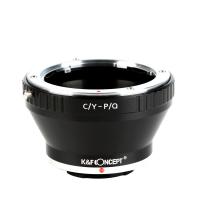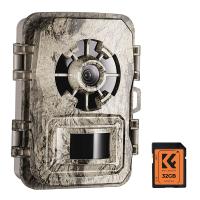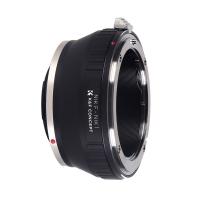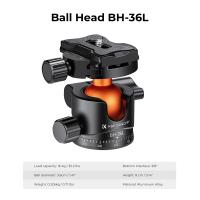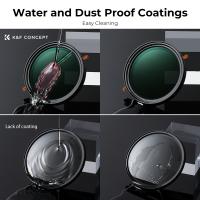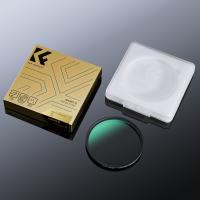Why Are Some Binoculars So Expensive ?
Some binoculars can be expensive due to several factors. High-quality binoculars often use premium materials, such as high-grade glass lenses and prisms, which can significantly increase the cost. These materials are designed to provide superior image clarity, brightness, and color accuracy. Additionally, expensive binoculars may have advanced coatings on the lenses to enhance light transmission and reduce glare. They may also feature durable and lightweight construction, such as magnesium alloy bodies, which adds to the overall cost. Furthermore, expensive binoculars may incorporate advanced technologies, such as image stabilization or rangefinding capabilities, which further contribute to their price. Finally, the reputation and brand value of the manufacturer can also influence the cost of binoculars, as renowned brands often command higher prices due to their established quality and customer trust.
1、 Optical Quality and Precision Engineering
Some binoculars can be quite expensive due to a combination of factors, with optical quality and precision engineering being the primary reasons.
Optical quality refers to the clarity, sharpness, and brightness of the image produced by the binoculars. High-quality binoculars use premium glass materials, such as extra-low dispersion (ED) or fluorite glass, which minimize chromatic aberration and deliver superior image quality. These materials are expensive to produce and require advanced manufacturing techniques to shape and polish the lenses to perfection. Additionally, high-end binoculars often feature multiple lens coatings to enhance light transmission, reduce glare, and improve color fidelity, further adding to their cost.
Precision engineering is another crucial aspect that contributes to the high price of binoculars. The internal mechanisms, such as the focusing system and prism assembly, need to be precisely aligned to ensure optimal performance. This requires meticulous craftsmanship and attention to detail during the manufacturing process. Additionally, high-end binoculars are often built with durable and lightweight materials, such as magnesium alloy or carbon fiber, which adds to their cost.
Moreover, the latest advancements in technology have also impacted the price of binoculars. For example, some manufacturers have started incorporating image stabilization systems into their high-end models, which compensate for hand movements and provide a steadier view. These advanced features require additional components and engineering expertise, further driving up the cost.
In conclusion, the high price of some binoculars can be attributed to the optical quality and precision engineering involved in their production. The use of premium glass materials, advanced lens coatings, and precise alignment of internal mechanisms all contribute to the superior performance of these binoculars. Additionally, the incorporation of new technologies and features further adds to their cost. While there are more affordable options available, those seeking the best optical experience and durability may opt for the higher-priced binoculars.

2、 High-Quality Materials and Construction
Some binoculars can be quite expensive due to a combination of factors, with one of the main reasons being the use of high-quality materials and construction. Manufacturers of high-end binoculars often invest in premium materials to ensure superior optical performance and durability.
One key component that contributes to the cost is the quality of the lenses. High-end binoculars often feature lenses made from extra-low dispersion (ED) glass or fluorite, which helps to minimize chromatic aberration and produce sharper, clearer images. These materials are more expensive to produce and require precise manufacturing techniques to shape and polish the lenses to perfection.
Another factor is the construction of the binoculars. High-quality binoculars are typically built with sturdy and lightweight materials such as magnesium alloy or carbon fiber, which offer both durability and portability. The construction also involves intricate engineering to ensure precise alignment of the optical components, resulting in better image quality and reduced eye strain.
Moreover, expensive binoculars often come with advanced features like image stabilization, wide field of view, and enhanced coatings to improve light transmission and reduce glare. These additional features require extensive research and development, which adds to the overall cost.
It is worth noting that advancements in technology and manufacturing processes have made it possible for some mid-range binoculars to offer excellent performance at a more affordable price. However, for those seeking the absolute best optical experience, investing in high-end binoculars with top-notch materials and construction remains the preferred choice.
In conclusion, the high cost of some binoculars can be attributed to the use of high-quality materials and construction techniques. These factors contribute to superior optical performance, durability, and advanced features, making them a worthwhile investment for those who prioritize the best possible viewing experience.

3、 Advanced Features and Technology
Some binoculars can be quite expensive due to their advanced features and technology. These features and technologies are designed to enhance the overall viewing experience and provide users with superior image quality.
One of the main factors that contribute to the high cost of binoculars is the quality of the optics. Expensive binoculars often use high-quality lenses and prisms that are made from premium materials. These materials are designed to minimize light loss and distortion, resulting in a clearer and sharper image. Additionally, expensive binoculars may also have multiple lens coatings to reduce glare and improve light transmission, further enhancing the image quality.
Another reason for the high price tag is the use of advanced technology. Many expensive binoculars come with features such as image stabilization, which helps to reduce hand shake and provide a steady image even at high magnifications. Some binoculars also incorporate rangefinders or built-in compasses, which can be useful for outdoor activities such as hunting or birdwatching.
Furthermore, the construction and design of expensive binoculars often prioritize durability and ergonomics. They may be made from high-quality materials such as magnesium alloy or carbon fiber, making them lightweight yet robust. The design may also include features such as waterproofing and fog-proofing, ensuring that the binoculars can withstand harsh weather conditions.
It is worth noting that advancements in technology and manufacturing processes have made some of these advanced features more accessible and affordable. As a result, there are now options available at various price points that offer similar features and performance to their more expensive counterparts.
In conclusion, the high cost of some binoculars can be attributed to the advanced features and technology they incorporate. These features enhance the image quality, provide additional functionalities, and prioritize durability and ergonomics. However, with advancements in technology, there are now more affordable options available that offer similar performance.
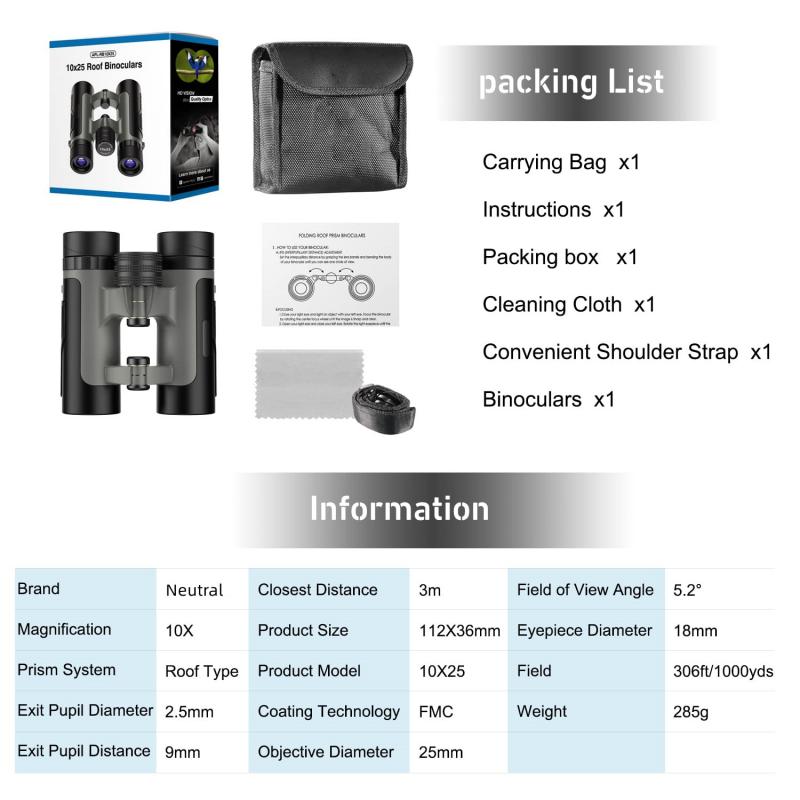
4、 Brand Reputation and Prestige
Some binoculars can be quite expensive due to a combination of factors, one of which is brand reputation and prestige. Established brands with a long history of producing high-quality optics often command higher prices for their products. These brands have built a reputation for excellence and have a loyal customer base willing to pay a premium for their products.
Brand reputation and prestige are important because they signify a level of trust and reliability. Customers are willing to invest in binoculars from reputable brands because they believe they will get a superior product that meets their needs. These brands have invested heavily in research and development, ensuring that their binoculars are equipped with the latest technologies and innovations.
Moreover, reputable brands often have stringent quality control measures in place to ensure that each pair of binoculars meets the highest standards. This level of attention to detail and quality assurance adds to the overall cost of production, which is reflected in the price of the binoculars.
In recent years, there has been a growing trend towards premium binoculars that offer advanced features and enhanced performance. Manufacturers are incorporating cutting-edge technologies such as image stabilization, high-definition optics, and weatherproofing into their products. These advancements contribute to the higher price tag of these binoculars.
Additionally, the cost of materials used in the construction of binoculars can also impact their price. High-quality lenses, prisms, and coatings are essential for producing clear and sharp images, but they can be expensive to manufacture. Brands that prioritize using the best materials will often charge more for their products.
In conclusion, the high cost of some binoculars can be attributed to brand reputation and prestige, as well as the incorporation of advanced technologies and the use of high-quality materials. These factors contribute to the overall value and performance of the binoculars, making them a worthwhile investment for those who prioritize optical excellence.
